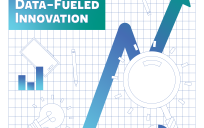![]()
Former President Obama’s Memorandum on Transparency and Open Government ushered in a new emphasis on encouraging governments at all levels to make the datasets they were already collecting available to the citizens they serve. State and local governments really heeded the call and many cities launched Open Data Portals to provide access to the raw data and help facilitate the insights to be gleaned from that data. As is customary, initiatives change from administration to administration as focus areas are unique to each President. While open data does not seem to be as high of a priority for this Administration, this should in no way impede the significant progress already underway, and, in many ways, state and local government is the perfect place for open data to grow and prosper.
The true value of opening government data lies in how agencies, departments, and the public put it to use. If open data isn’t actionable, then government is just checking a box. Providing access to data is important, but if information can’t be shared in a way that makes sense and is understood by the public, it isn’t doing anyone any favors. A new guide, Tactical Data Engagement, released last week by the Sunlight Foundation emphasizes this point and helps lay out the process cities can take to elevate their open data practices.
The Sunlight Foundation is a nonpartisan nonprofit that advocates for open government globally and uses technology to make government more accountable to all. For their guide, the Sunlight Foundation worked with more than fifty government organizations to identify best practices, share case studies and outline processes that help cities support citizen engagement and data driven decisions for state and local government.
I have seen the power of opening data in action, but more importantly, I have seen that for data to be useable, it must bring issues into context so that insights can be derived and data driven policies can be made. It isn’t enough just to do a data dump: cities get the real value of opening their data when they enable their citizens to compare different factors and see relationships within the data. This has been a real movement in the state and local arena, where governments have not only brought a wealth of public data to the web, but have also provided a myriad of apps that have allowed users to interact with that data.
As a firm believer in the transformative power of open data, I monitor the landscape for really great examples of state and local governments’ innovative use of open data to increase citizen services and engagement. I was impressed with the State of Arizona’s State Cartographers Office which created AZGEO-Open Data to allow for coordination between all state organizations including municipalities to federate their open data to one common site, effectively creating a one stop spot for data. Various state initiatives and projects are highlighted through applications that make accessing context for the data simple.
AZGEO-Open Data also helps emphasize another important point with regards to open data, and that is the collaboration that open data sites helps foster and support within state and local government. For instance, Valley Metro provides information on their ridership numbers and the City of Glendale provides information on planning and zoning. By having both of these live on AZGEO-Open Data, prospective businesses can use this information together to make better decisions on future land use. Many times, I have seen that the process of collecting data sets helps to break down siloes within government. The cross pollination of these data sets, and the realization that data collected by one department can have an impact in other departments across government is exciting to see.
While the shift of focus with regards to open data at the federal level is a change, I for one am excited to see true momentum at the state and local level. One of the most exciting things about this open data journey is that we are only at the beginning. Governments are seeing that once you begin opening data and applying context, there is a chain reaction where data becomes the connecting factor across departments who are able to unite to address a myriad of issues facing their community. When it comes to open data, state and local governments are well poised to bring this to fruition, and I can’t wait to watch it unfold.
Christian Carlson is part of the GovLoop Featured Blogger program, where we feature blog posts by government voices from all across the country (and world!). To see more Featured Blogger posts, click here.





Leave a Reply
You must be logged in to post a comment.